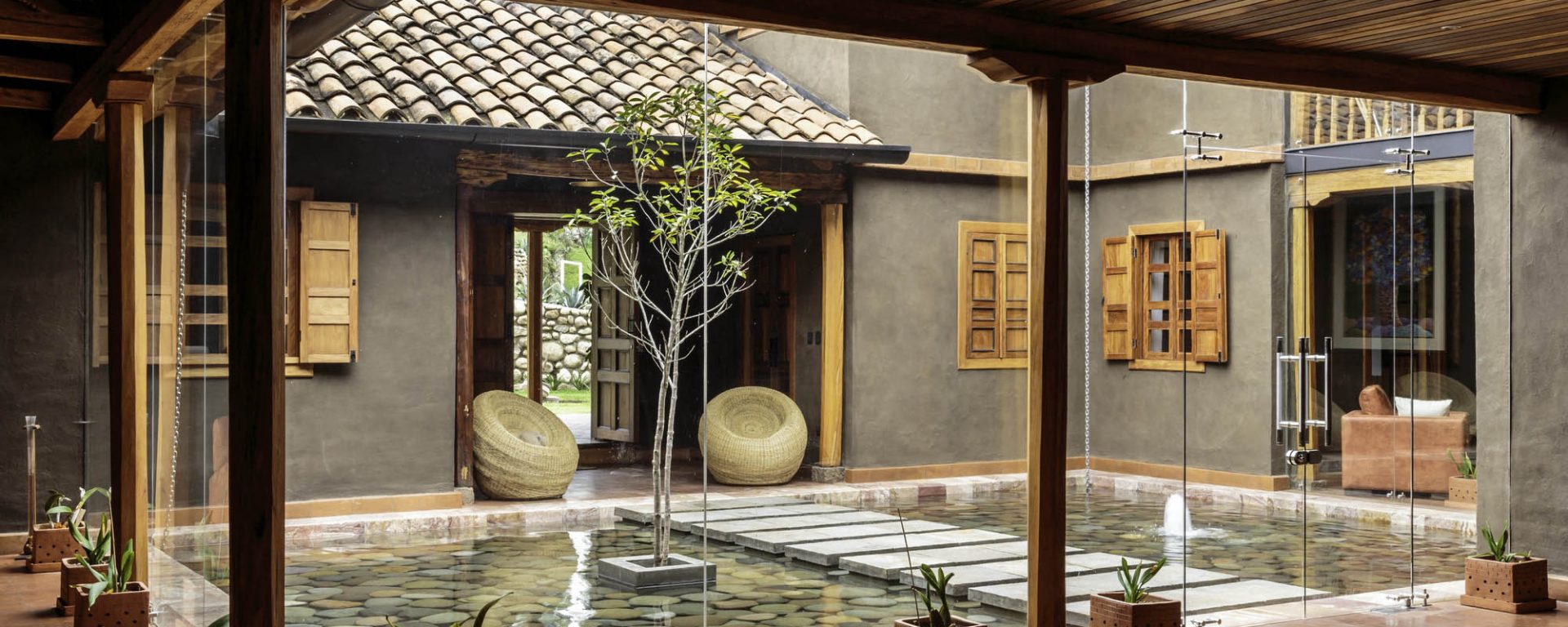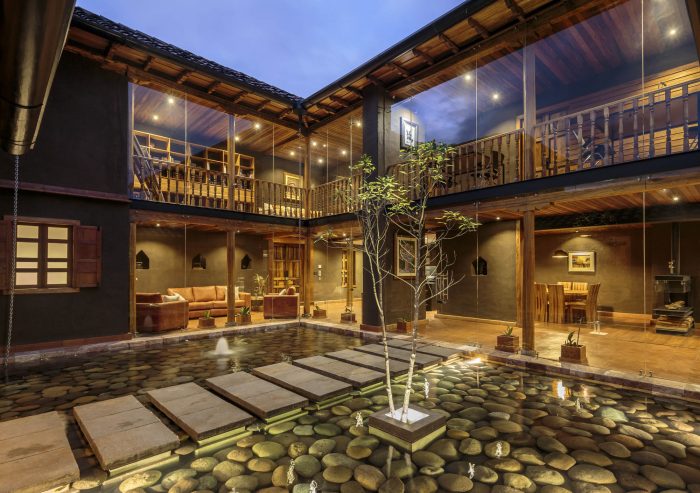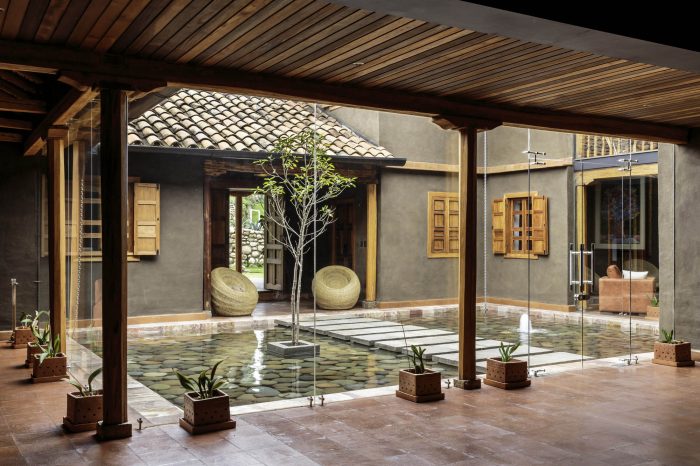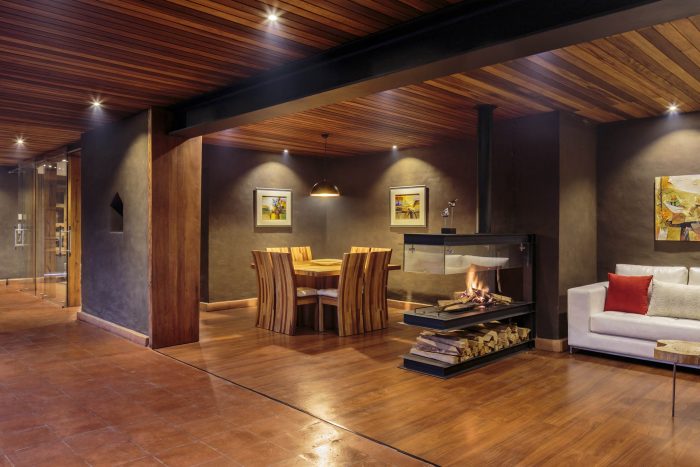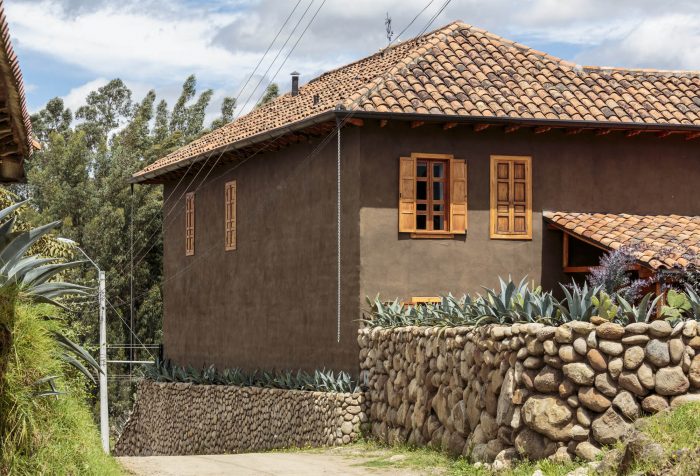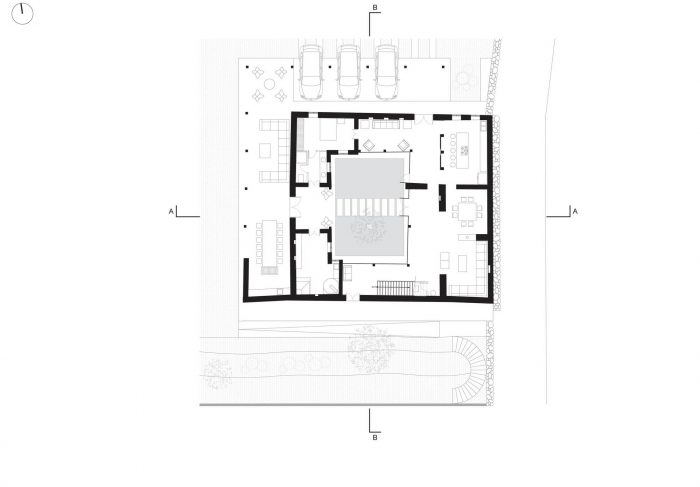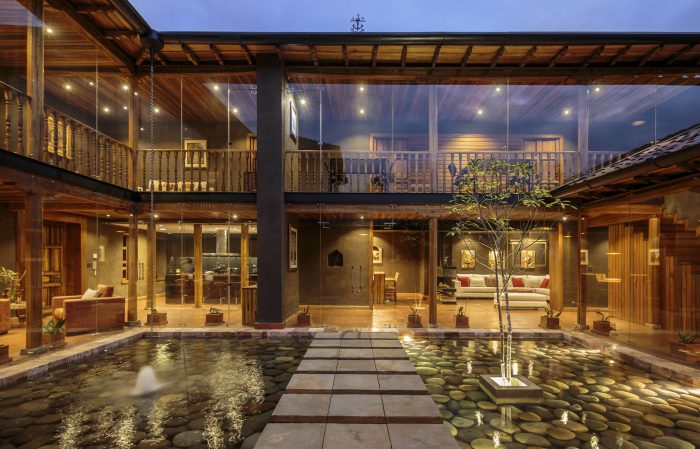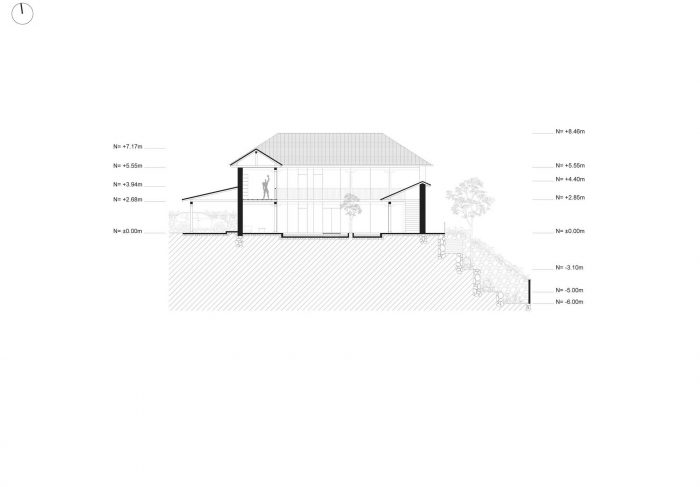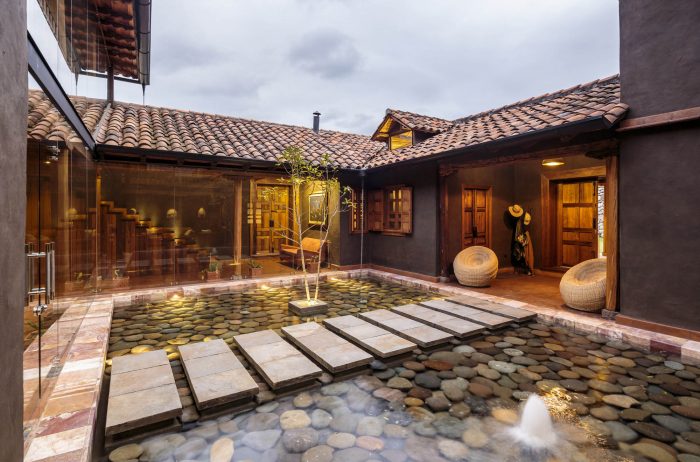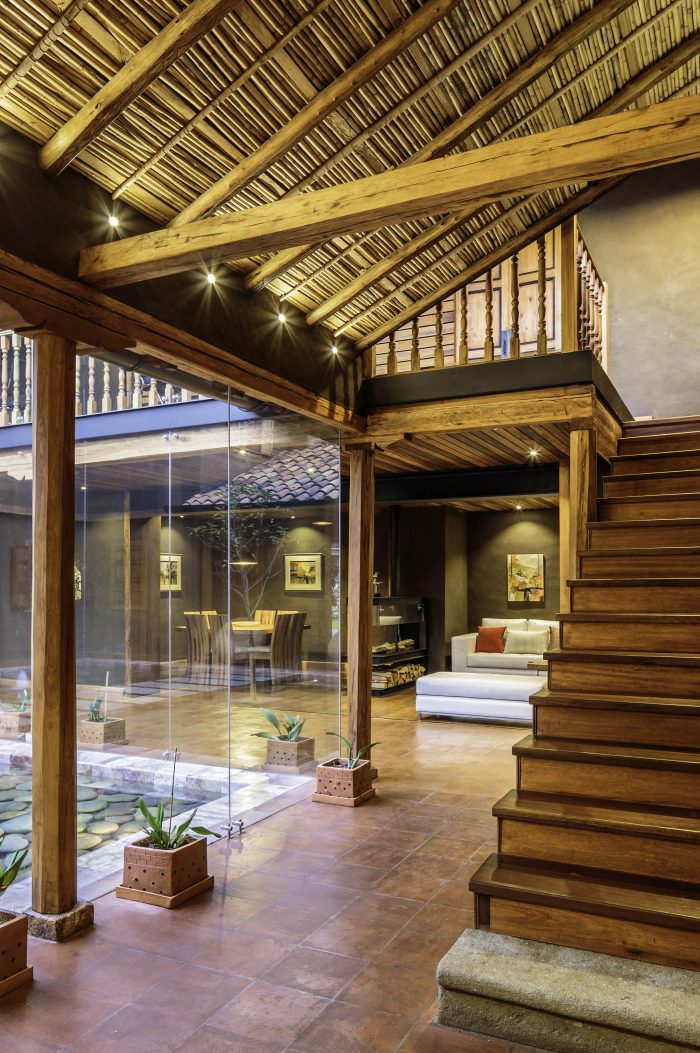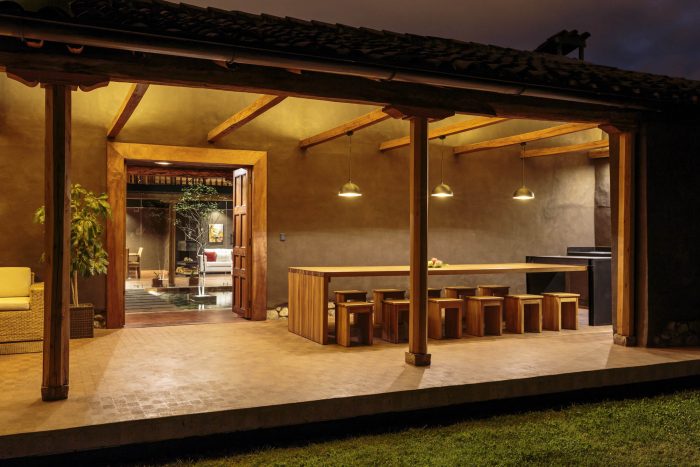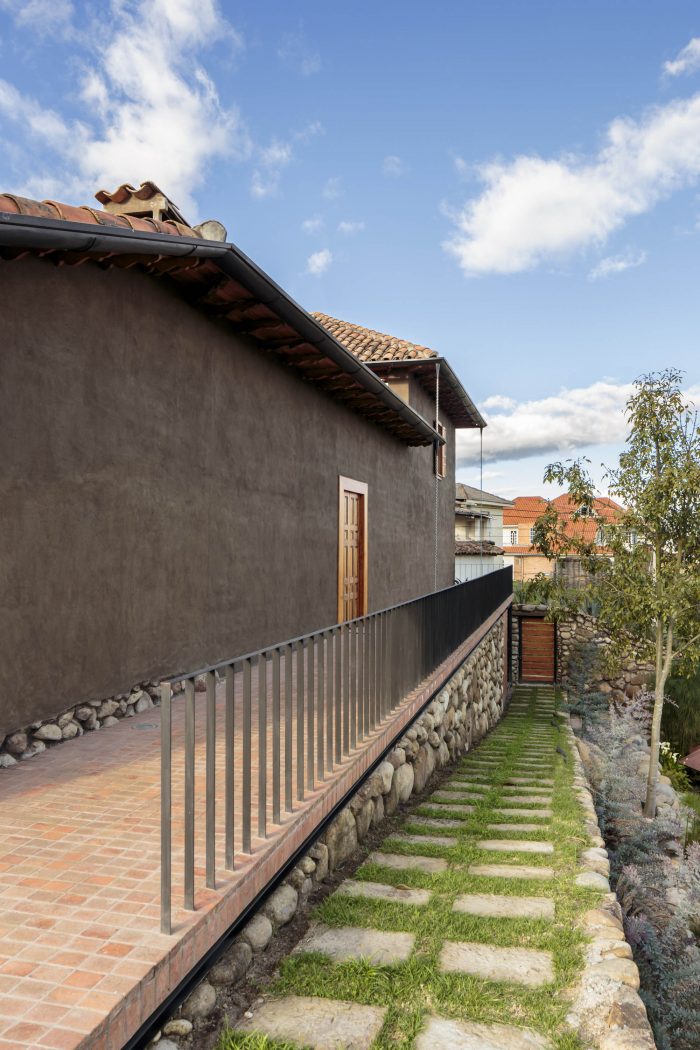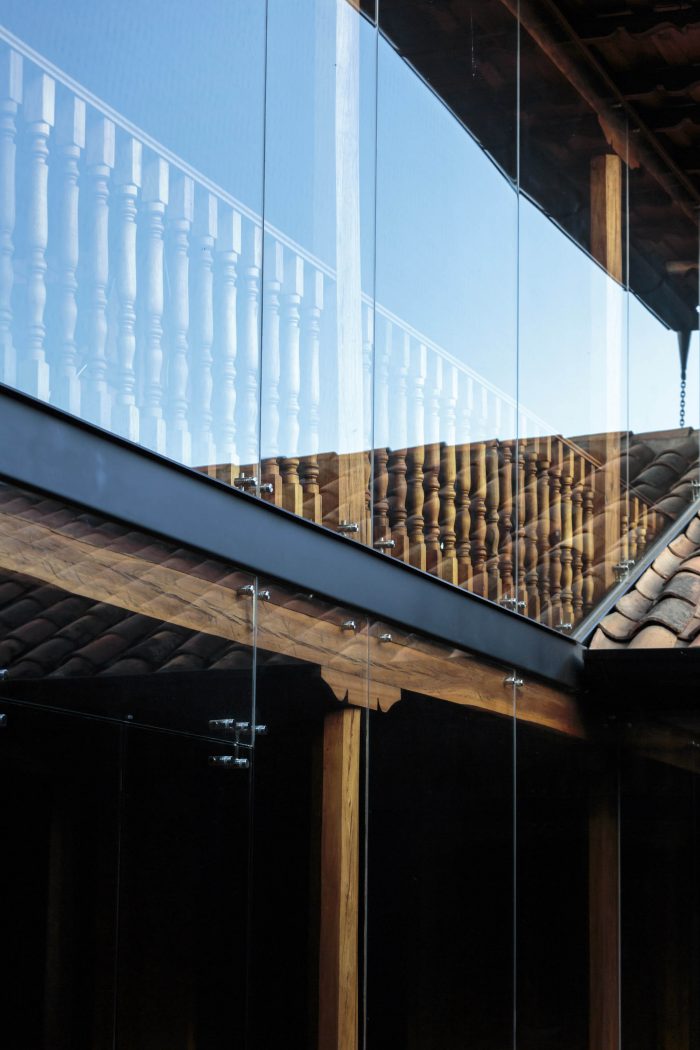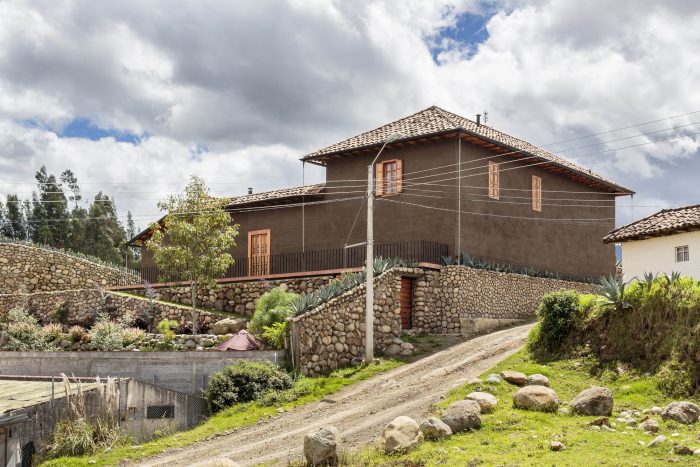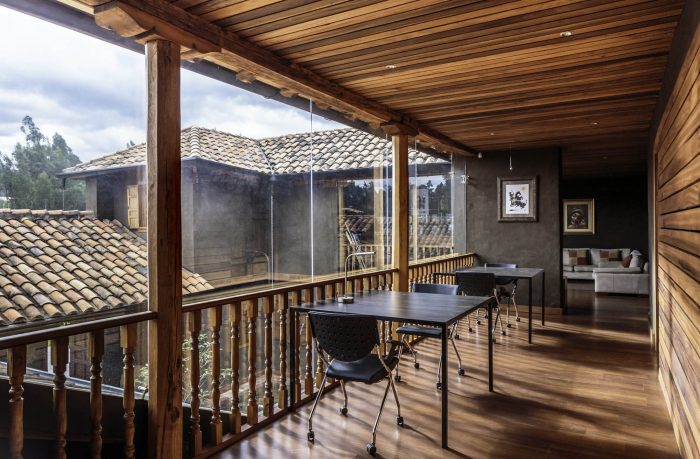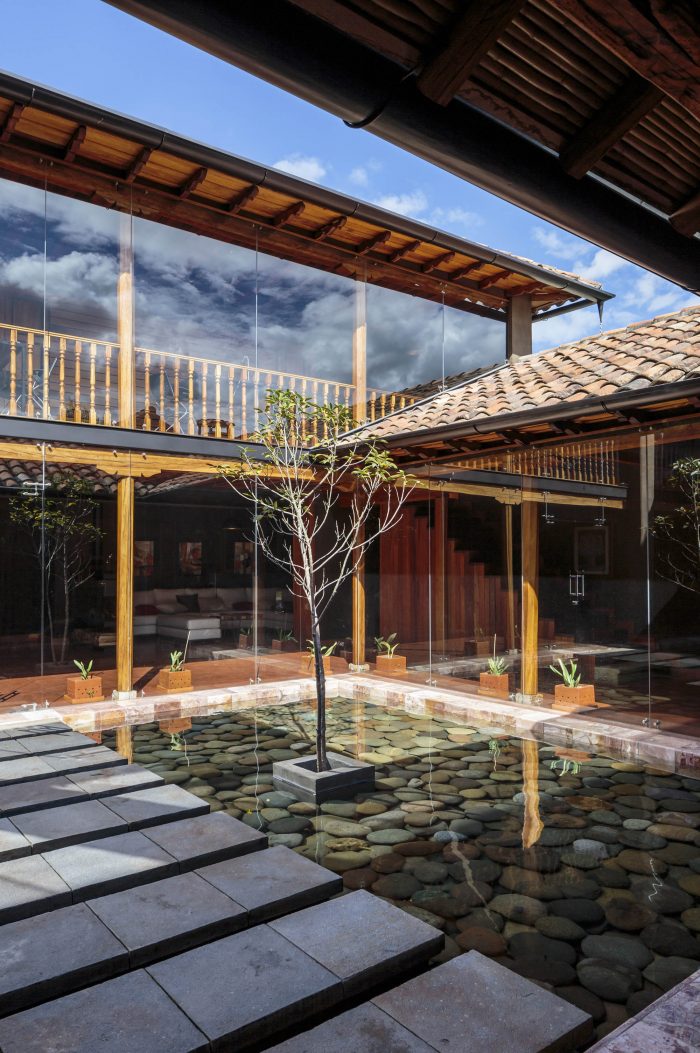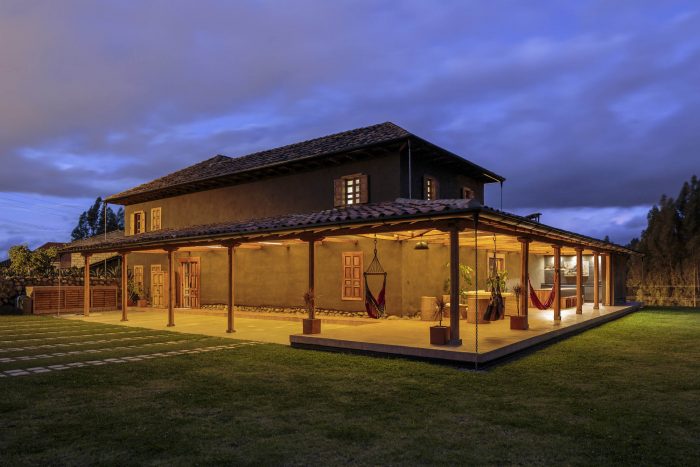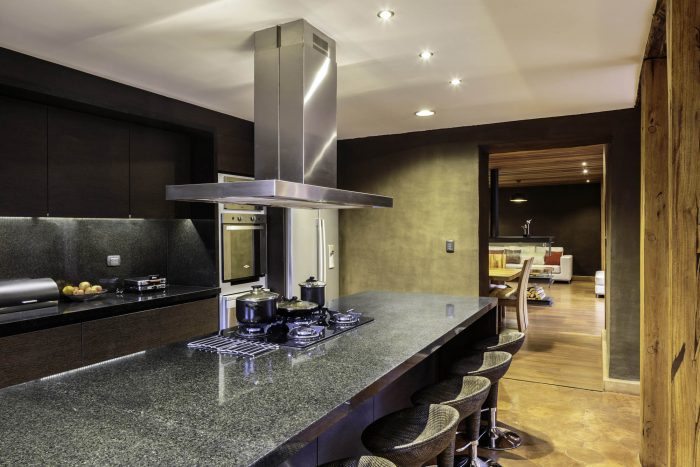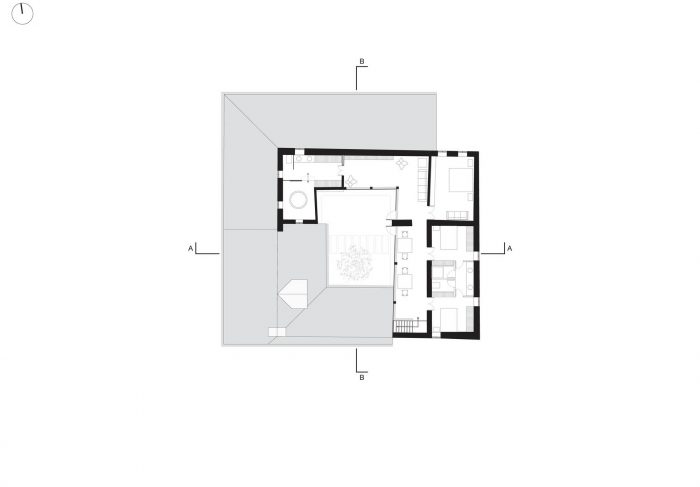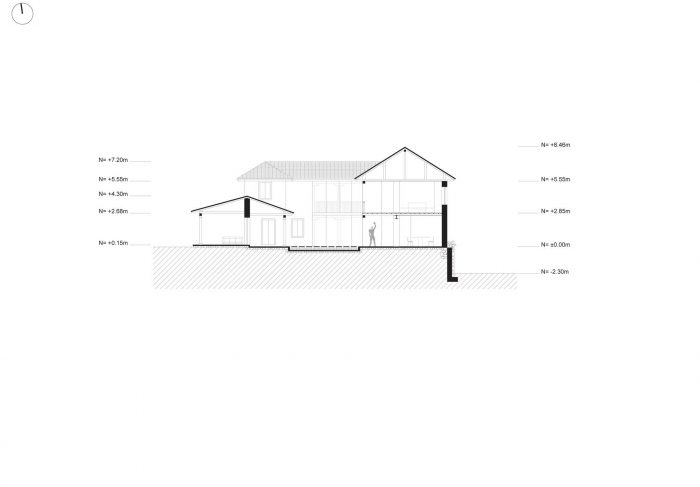该建筑是二十世纪的农村传统房屋。国家文化遗产研究所对其进行了清点。它坐落在圣华金地区的最高处,有一个陡峭的角度。这是一个历史上著名的农耕地,为昆卡市提供蔬菜。
The building involved is a rural traditional house of the twentieth century. It was inventoried by the National Institute of Cultural Heritage (Instituto Nacional de Patrimonio Cultural, INPC). It’s situated in the highest part of a property with a steep angle in the area of San Joaquin. This is a historically known farming place that provides with vegetables to the city of Cuenca.
该建议是基于现有结构的再利用和区域的再功能,以产生现代生活方式要求的宜居性和舒适性条件。
The proposal is based on the reuse of the existing structure and the re-functionality of the areas in order to generate habitability and comfort conditions that modern living style demands.
这个项目通过应用传统技术来拯救传统的土坯建筑,这些技术是从经验开始的,并通过其不断的重复来支持。现有材料如岩石、泥土、桉木、干草、芦苇等被重新利用,以恢复原有结构。同时,为了使这些区域重新发挥作用,还加入了新的元素。 这些都是工业化的材料,如钢和玻璃,能够从现有的材料中展现出新的东西。在外部区域的干预中,平台的整合显得尤为突出。这些都是用从同一地产中提取的岩石建造的,产生了自己的原材料。墙体和原生植被等元素尊重集体记忆,为景观做出贡献。
This project rescues the traditional construction in adobe by applying traditional techniques that start from the experience and is supported by its unceasing recurrence. Existing materials such as rock, dirt, eucalyptus wood, hay and reed have been reutilized in order to rehabilitate the original structure. At the same time, for the re-functionality of the areas, new elements are incorporated. These are industrialized materials such as steel and glass, able to show the new from the existing one. The consolidation of platforms outstands in the intervention of the exterior areas. These are built with the rock extracted from the same property generating its own raw material. Elements such as walls and native vegetation respect the collective memory and contribute to the landscape.
该项目分为两个主要区域,由隐私等级定义,并通过天井连接。单层的街区容纳了更多的社交区域,客厅;餐厅和烧烤场在门廊中。同时,柴火炉和木制烤箱位于旧厨房,它因其原有的铜锈而显得与众不同。两层楼的建筑包含了更多的私人区域,如客厅,餐厅,厨房,办公室,图书馆,卧室和服务。几乎所有的家具都是专门为这个房子设计的。
The program is divided into two main areas defined by the privacy grade and connected through the patio. The single-storey block holds more social areas, living rooms; dining room and barbeque are in the porch. Meanwhile, the woodstove and wood oven are situated in the old kitchen that outstands for its pre existing patina. The two-storey block contains more private areas such as living rooms, dining room, kitchen, office, library, bedrooms and service. Almost all of the furniture is specially designed for this house.
在室内长廊前放置了玻璃幕墙,以增加各区域的热舒适度,同时也保护木质结构不受风雨侵袭。这些都是导致这栋房子在翻新前出现退化的主要大气现象。
A glass façade is placed before the interior galleries in order to increase thermal comfort in the areas as well as to protect the wooden structure from the rain and wind. These are the main atmospheric phenomena that were responsible of the deterioration stage which this house presented before it was renovated.
天井是由一个水镜定义的,其中包含河石和从那里一棵Arupo树站出来。由于这里是房屋视觉开放的区域,因此被认为是唤起自然的元素,并将其插入家中。
The patio is defined by a water mirror which contains river rock and from where an Arupo tree outstands. Since this is an area where the house visually opens up, this is considered as an element that evokes nature and inserts it in the home.
建筑师: Iván Quizhpe Arquitectos
面积:540平方米
年份:2013年
摄影:Sebastián Crespo
城市: CUENCA
国家:厄瓜多尔
Architects: Iván Quizhpe Arquitectos
Area: 540 m²
Year: 2013
Photographs: Sebastián Crespo
City: CUENCA
Country: Ecuador

